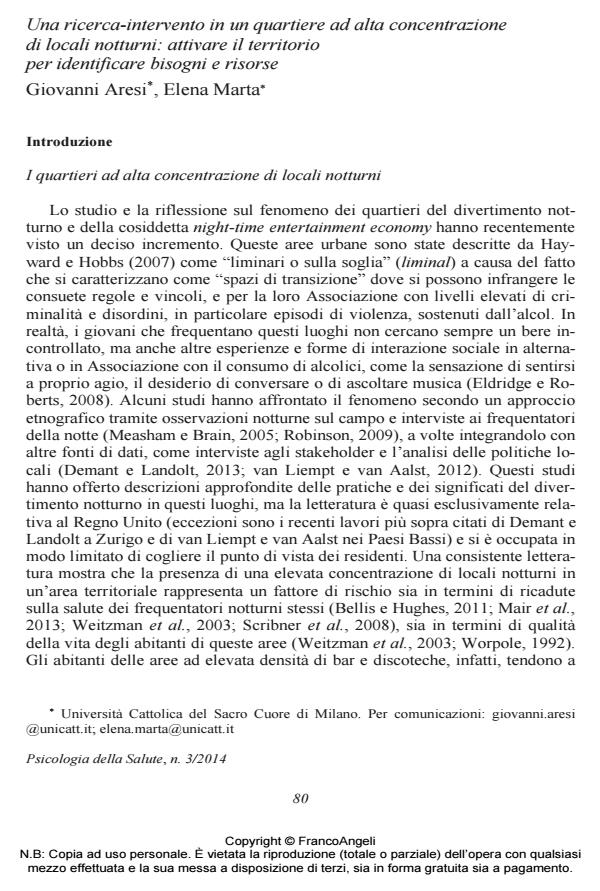A participatory research in an area with a high concentration of drinking venues: mobilizing the community to assess needs and assets
Journal title PSICOLOGIA DELLA SALUTE
Author/s Giovanni Aresi, Elena Marta
Publishing Year 2014 Issue 2014/3
Language Italian Pages 19 P. 80-98 File size 91 KB
DOI 10.3280/PDS2014-003005
DOI is like a bar code for intellectual property: to have more infomation
click here
Below, you can see the article first page
If you want to buy this article in PDF format, you can do it, following the instructions to buy download credits

FrancoAngeli is member of Publishers International Linking Association, Inc (PILA), a not-for-profit association which run the CrossRef service enabling links to and from online scholarly content.
The concentration of drinking venues in a territorial area is a health risk factor for young nightlife goers and has a negative effect on residents’ quality of life. The literature on nightlife districts hasn’t fully described residents’ experience nor there are examples of involving local stakeholders in studies and interventions. The present contribution describes the main component of a participatory need and asset assessment research in a nightlife district in the city of Milan. In particular the results of the interviews to local stakeholders and residents, and of a final phase of feedback interviews and focus groups with participants, are described. Nightlife-related incivilities (litter, urine, vandalism, etc.) are perceived by residents as the most relevant perceived problem impacting on their quality of life. Nighttime noise is relevant only in specific limited areas, but it appears to be more tolerable because, in opposition to the former, doesn’t have an impact on residents’ daytime activities. The presents participatory research identified and mobilized relevant community stakeholders, and it represents a preliminary step of a further participatory design and implementation of interventions to promote youngsters’ health and residents’ quality of life.
Keywords: Participatory research, Social Reconnaissance, participation, local communities, nightlife districts.
- Factors of Youth Satisfaction with Café Bars and Nightclubs in Zagreb Šime Vukman, Karlo Mak, in Društvene i humanističke studije (Online) /2021 pp.509
DOI: 10.51558/2490-3647.2021.6.4.509
Giovanni Aresi, Elena Marta, Una ricerca-intervento in un quartiere ad alta concentrazione di locali notturni: attivare il territorio per identificare bisogni e risorse in "PSICOLOGIA DELLA SALUTE" 3/2014, pp 80-98, DOI: 10.3280/PDS2014-003005